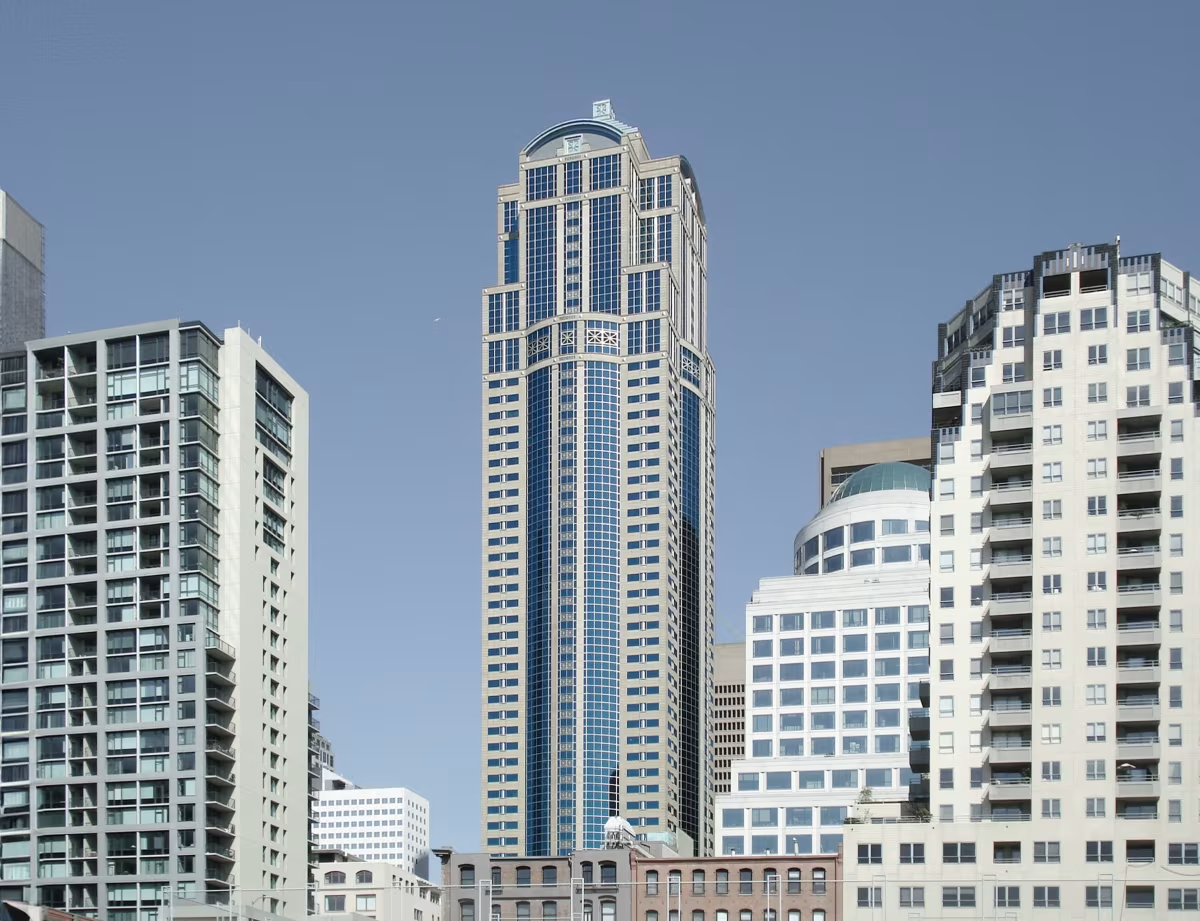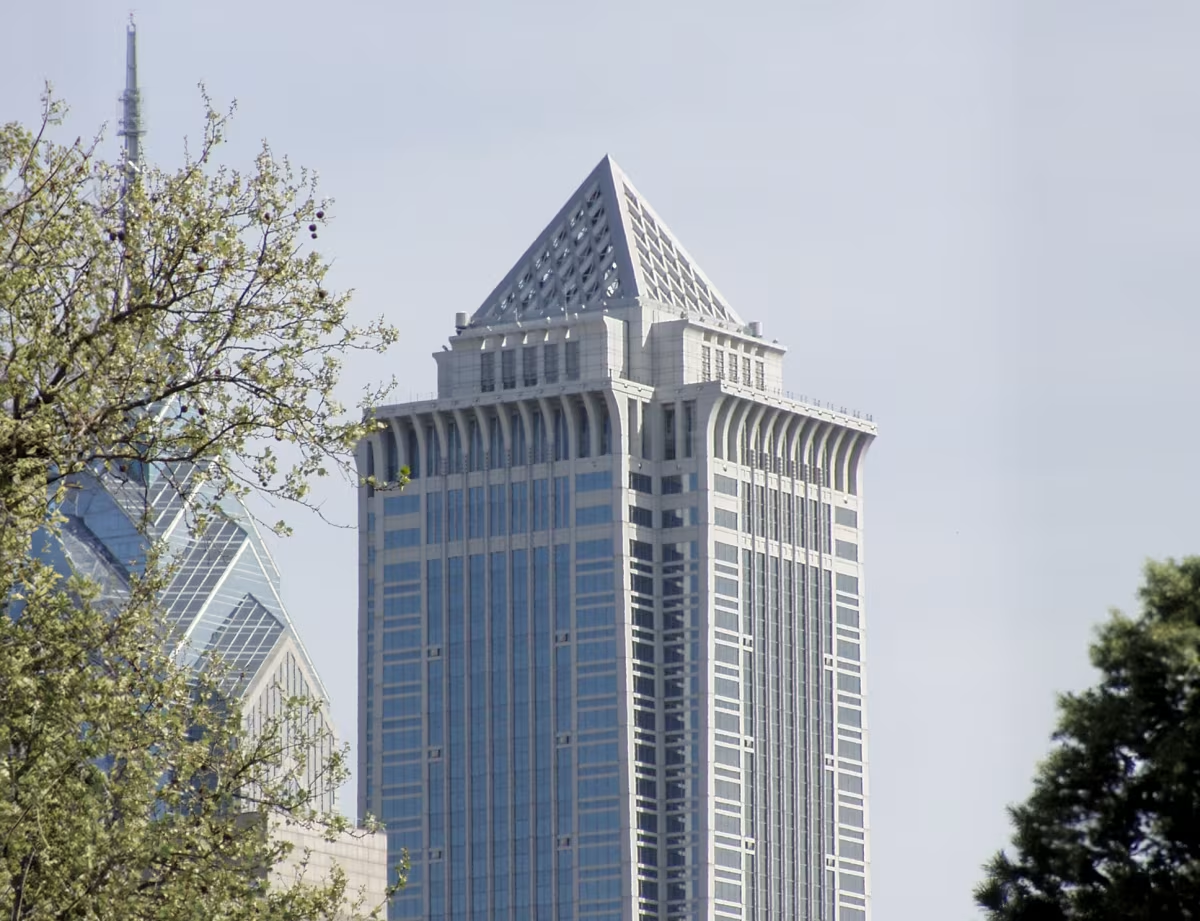1201 Third Avenue Tower vs BNY Mellon Center Philadelphia Building


Comparing the 1201 Third Avenue Tower and the BNY Mellon Center Philadelphia Building is an interesting exercise, because even though they are located in different cities (Seattle, WA and Philadelphia, PA), both were designed by Kohn Pedersen Fox Associates and finished within within 2 years of each other. This gives us the chance to see how the same architect's ideas were expressed in different urban contexts almost simultaneously.
Height & Size
These two towers present an interesting contrast in their proportions. The BNY Mellon Center Philadelphia Building rises higher at 791ft (241m), while the 1201 Third Avenue Tower reaches 771ft (235m). However, the 1201 Third Avenue Tower accommodates more floors with 55 levels above ground, compared to 54 floors in the BNY Mellon Center Philadelphia Building.
This suggests different approaches to interior space design. The BNY Mellon Center Philadelphia Building has an average floor-to-floor height of approximately 4.5m, while the 1201 Third Avenue Tower has more compact floors averaging around 4.3m each.
These different proportions likely reflect the specific needs each building was designed to serve, whether driven by zoning regulations, client requirements, or the intended use of the spaces within. The contrast shows how architects can achieve different spatial experiences even when working with similar overall building scales.
Architectural Style
Both the 1201 Third Avenue Tower and the BNY Mellon Center Philadelphia Building were designed in line with the aesthetic conventions of the Postmodernism style.
At the time, this style was at the height of its popularity. So Kohn Pedersen Fox Associates followed what was in many ways expected at the time, producing designs that fit comfortably within contemporary architectural norms rather, than breaking with convention.
Uses
Both the 1201 Third Avenue Tower and the BNY Mellon Center Philadelphia Building were designed to serve as commercial towers, and that has remained their main use since their completion, serving similar roles in the urban fabric.
Both towers provide significant parking capacity, with 1201 Third Avenue Tower offering 810 spaces and the BNY Mellon Center Philadelphia Building offering 160.
Structure & Facade
Both the 1201 Third Avenue Tower and the BNY Mellon Center Philadelphia Building rely on a Frame structural system.
A frame structure uses a grid of columns and beams to carry the building's loads. This frees the walls from structural duties, allowing for flexible floor plans and larger windows.
They also employ the same type of facade, a Curtain Wall facade.
A curtain wall is a non-load-bearing facade hung from the structural frame. It is anchored to floor slabs and transfers only its own weight and wind loads, allowing for sleek, glassy exteriors.
| 1201 Third Avenue Tower | BNY Mellon Center Philadelphia Building | |
|---|---|---|
| Kohn Pedersen Fox Associates | Architect | Kohn Pedersen Fox Associates |
| 1986 | Construction Started | 1988 |
| 1988 | Year Completed | 1990 |
| Postmodernism | Architectural Style | Postmodernism |
| Commercial | Current Use | Commercial |
| 55 | Floors Above Ground | 54 |
| 6 | Floors Below Ground | 2 |
| 235 m | Height (m) | 241 m |
| Frame | Structure Type | Frame |
| Steel | Vertical Structure Material | Steel And Concrete |
| Concrete And Steel | Horizontal Structure Material | Steel And Concrete |
| No | Facade Structural? | No |
| Granite, Glass | Main Facade Material | Stone, Glass, Aluminum |
| Howard S. Wright Construction | Main Contractor | Turner Construction |
| Wright Runstad & Co. | Developer | CommonWealth REIT |
| KPFF Consulting Engineers | Structural Engineer | WSP Cantor Seinuk |
| WA | State | PA |
| Seattle | City | Philadelphia |
| 1201 Third Avenue | Address | 1735 Market Street |